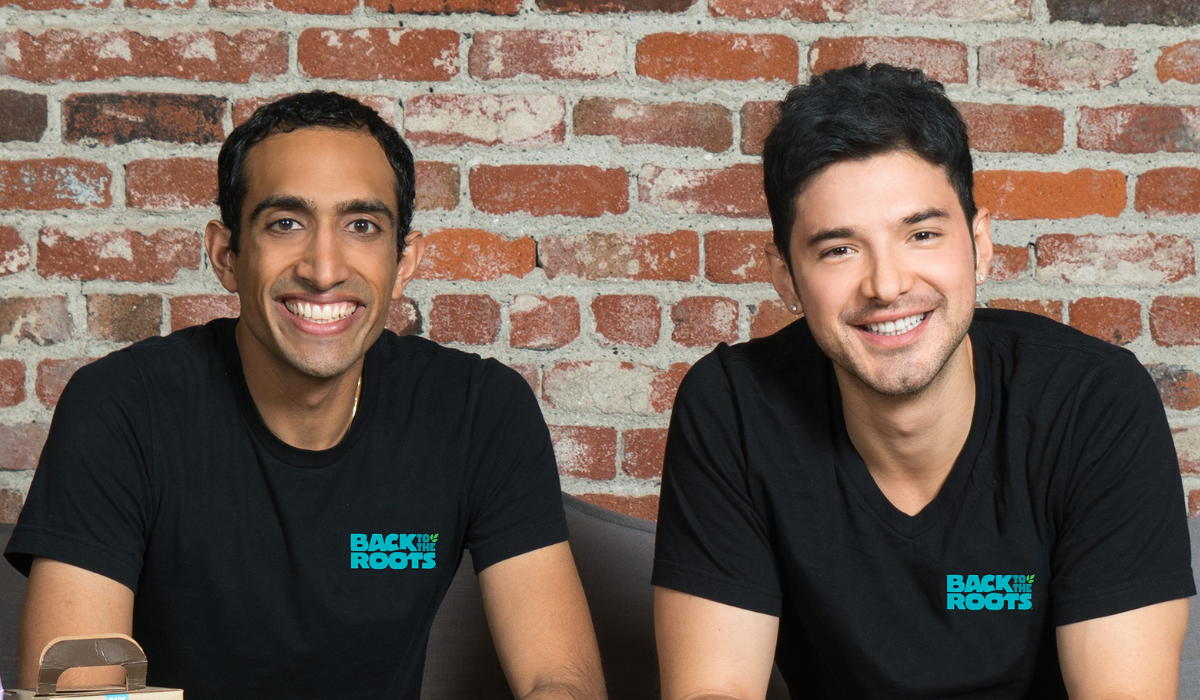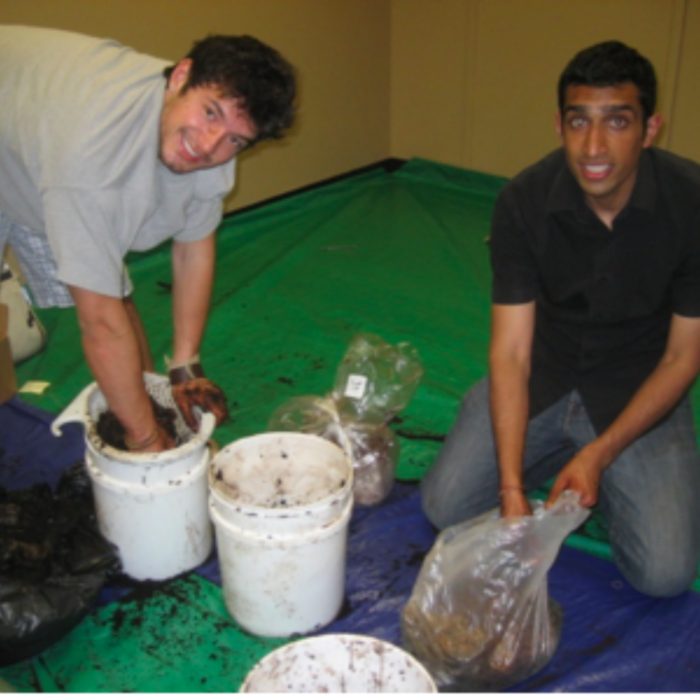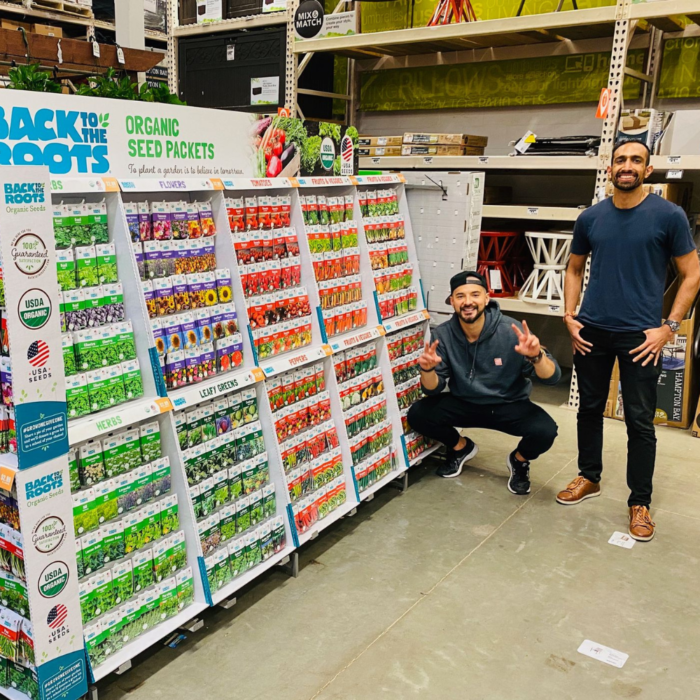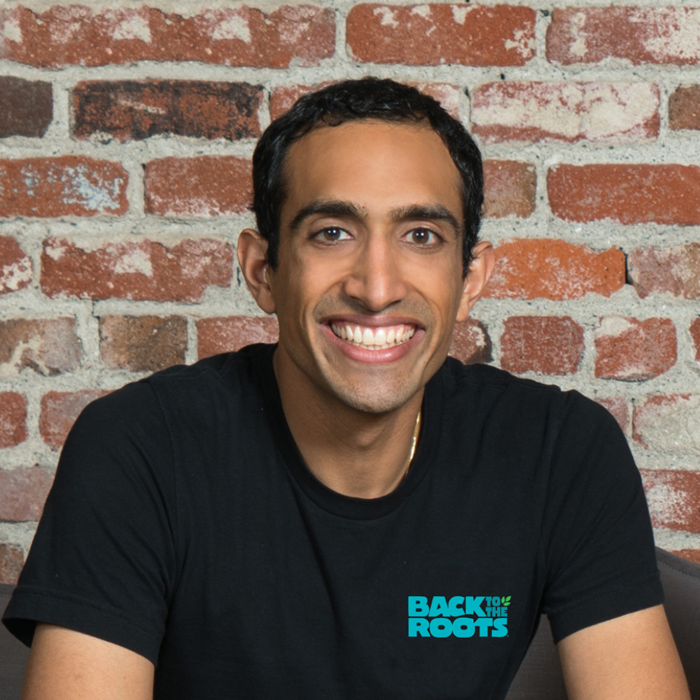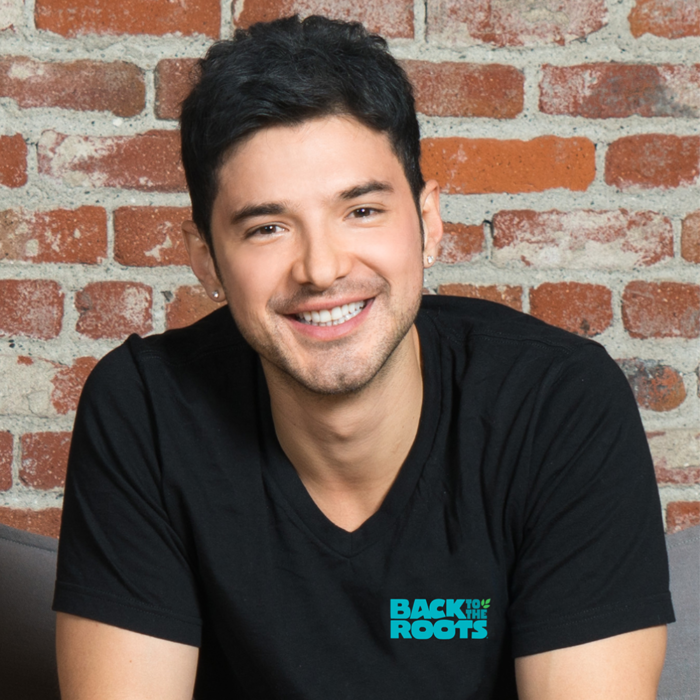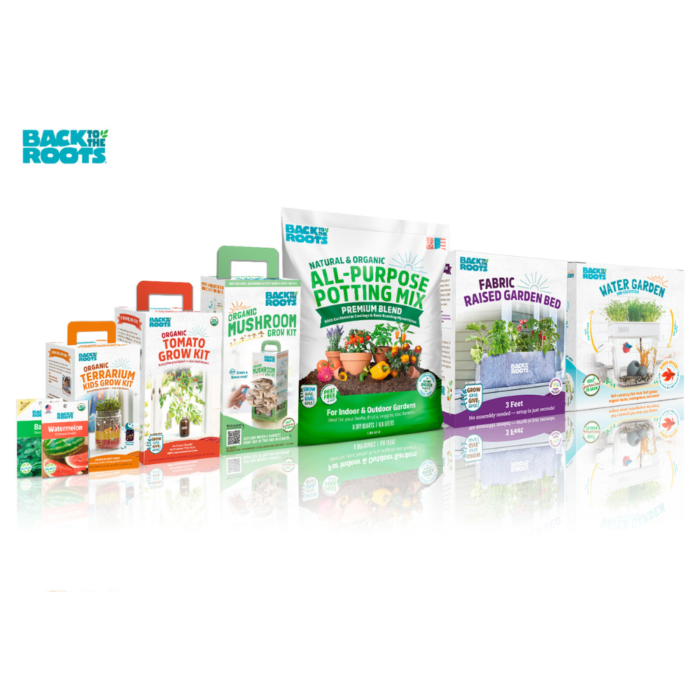Foundr Magazine publishes in-depth interviews with the world’s greatest entrepreneurs. Our articles highlight key takeaways from each month’s cover feature. We talked with Nikhil Arora and Alejandro Velez, co-founders of Back to the Roots, America’s #1 organic gardening company. To read more, subscribe to the magazine.
—————
Walking down an aisle at a big-box store, you might notice a display of white cardboard boxes with bright purple or green lettering. Some have a photo of oyster mushrooms spilling out of the same box on a sunny kitchen counter, while others show a sunflower sprouting out of a mason jar. Inside the boxes are everything you need to grow these plants on your counters at home, making organic gardening more accessible to a new generation of growers.
The do-it-yourself organic gardening kits are from Back to the Roots, a company started more than a decade ago by two (then-) recent college grads who never planned to build it.
“We started this with no background in anything to do with food, gardening, agriculture—let alone mushrooms,” Nikhil Arora, one of the co-founders of Back to the Roots, says of the venture.
In 2009, he and Alejandro Velez were sitting in a lecture hall learning about business ethics. With graduation on the horizon, Arora was ready to start consulting, and Velez had a position lined up in investment banking. This was a big deal, given they were graduating into the 2008 recession. But these plans went out the window when their professor made an offhand remark about growing mushrooms on used coffee grounds.
Out of hundreds of students in the class, only Arora and Velez emailed the professor to find out more. He didn’t even remember where he had heard the fact, but he introduced the two students to each other. This introduction changed their lives, leading not only to a successful business but also a friendship that became like family.
The leap from investment banking to mushroom farming is pretty big, but the duo’s excitement spurred them on. Not only could they grow mushrooms, but they could get paid to collect old coffee grounds and sell the grounds as fertilizer after the mushrooms were grown.
“We spent hours brainstorming, kicking around ideas,” Arora says.
“I think we both, more than the idea, fell in love with starting to work with each other.”
It was easy for them to theorize how one product could produce the three revenue streams that would net their first million in revenue. They just had to figure out how to make it happen.
How did the two go from selling their first three pounds of oyster mushrooms to a presence in the aisles of Whole Foods and being the premier organic home gardening brand?
Like the first day they spent dreaming of their future business, the answer came from building relationships. Just like mushrooms support the plants and soil around them, Velez and Arora know they’re a part of a bigger ecosystem. Their relationships with consumers, retailers, investors, and, most importantly, each other have shaped the path of Back to the Roots.
From Selling What They Grew to Selling the Experience of Growing
The two began Back to the Roots with a $5,000 grant from the chancellor of UCLA. This opportunity pushed them to fully commit themselves to their mushroom dreams.
Velez canceled the lease on an apartment in New York City and continued living at his fraternity house. Arora lived on his brother’s futon for almost a year. In Oakland, California (about an hour from San Francisco and Silicon Valley), rent was at a premium, so the two found the cheapest office space they could: a 10’ by 10’ room next to a recording studio and an insurance agency.
One might imagine fields and sun when farming comes up, but mushroom growing looks a little different, with vertical racks of spent coffee yielding the fruit in dark, moist indoor spaces. Arora and Velez lugged thousands of pounds of coffee to their tiny office to support this venture.
The first five years saw the pair working two full-time jobs—they were both mushroom farmers and brand ambassadors. Every weekday, they would drive to the office building; every weekend, they would be at farmers markets selling what they grew. They credit that time with customers for the innovation that would see the Back to the Roots product line expand from a pack of mushrooms to a wide range of do-it-yourself organic growing kits.
After thousands of demos at farmers markets and stores, the co-founders learned how to fascinate people, especially kids. This is what pivoted their brand from a singular commodity (gourmet mushrooms) to commodifying the experience of growing them.
“We became almost tour guides more than we were doing demos,” Velez says, describing the duo’s willingness to show people the behind-the-scenes process of how they grew their mushrooms. “At one point, people would say, ‘I want to grow them myself.’”
The two realized that selling kits to grow at home built a long-term connection with customers. This was a pivotal shift in their values and goals for the business.
“It’s what eventually led us to go from farming, from us selling fresh produce, to gardening—which is like, how do we empower people everywhere to grow their own food?”
The first time Arora and Velez showed the prototype for their grow-your-own mushroom kits to Randy Ducummon, a buyer at Whole Foods, it didn’t go exactly as planned.
At the end of the meeting, they pulled out a plastic, basketball-sized, see-through bag filled with mushroom spores and put it on the table.
“We thought this was the next iPhone,” Arora says. “We were so darn proud about this thing. And I’ll never forget because Randy looks at it, and he literally almost falls out of his chair.”
But not in the way they hoped.
The feedback they got was that no one would put something so hideous on their countertop. The two took his advice, went back to the drawing board, and designed the clean packaging found in retail displays today.
This openness to feedback allows Back to the Roots to create products that resonate with consumers so successfully.
“We were really designing products for people who maybe have never grown before, who didn’t have a big backyard,” Arora says. “Which I think makes it fun too.”
Cultivating a Partnership That Supports a Vision
In 2022 the duo raised their class D funding—more than $50 million—and have doubled business every year for the past four years. A far cry from that first $5,000 check.
Arora credits their partnership as the foundation of their accomplishments. One of the reasons he thinks it’s so strong is that they share the same goals for Back to the Roots.
“There’s got to be such a deep level of alignment in your values and your intent,” Arora says. “And I say ‘intent’ both personally and with the business—why are we doing this, and where are we trying to take it?”
This clear insight into the long-term aspirations for the company allows the two to communicate openly.
“That creates such an amazing place where you can be vulnerable and debate ideas really hard because you are never debating the intent,” Arora says. These conversations can seem intense to other people on the team, but even though they appear this way from the outside, it’s this intensity that drives Back to the Roots forward.
Velez concurs and describes their conversations as tough.
“And they’re very quick because we know each other extremely well. It’s a game of ping-pong, of trying to get to the truth.”
Their long-term relationship inspires long-term trust—they’ve had the same group of investors since they started the company. They raised their series A funding on their perspective that being a gardening company and a food company was one thing. And they had two product lines that supported that idea: the grow-it-yourself kits and a line of ready-to-eat foods, like snacks and cereals. It was all grounded in connecting people to what they were eating in a genuine way.
But as each line grew, it became clear they would have to focus on one or the other.
“We had to make a really tough decision,” Velez says. “We had two businesses that ultimately connected to the same vision of connecting people to food, but there was very different infrastructure needed to keep scaling them.”
So the duo partnered with another company, Nature’s Path, to take on the ready-to-eat line.
“In our series B, we doubled down on the ready-to-grow line, and that’s been the path we’ve been on for the last four years,” Velez says.
Their shared vision for the future of Back to the Roots allowed them to sharpen their focus and expand what organic food growing looks like for American consumers today.
